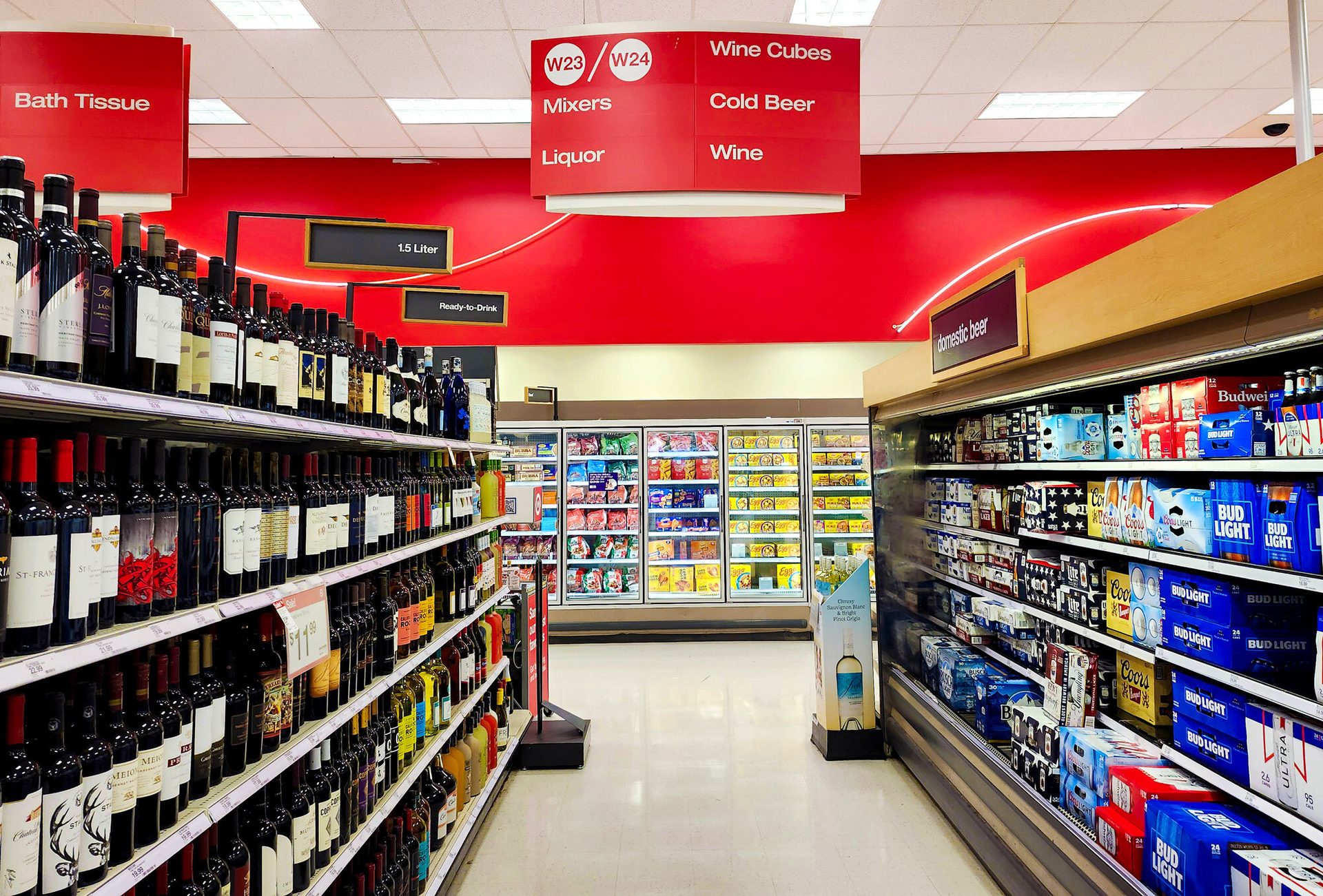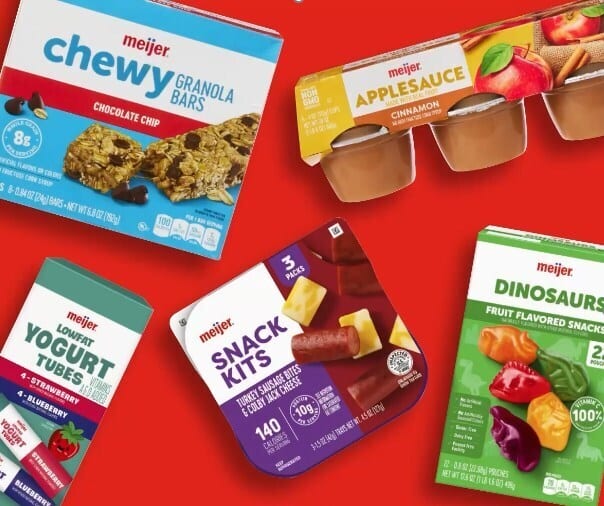Channel Strategies
Mass merchandisers deliver convenience, affordability
Channel attracts consumers with prices and array of offerings
By Chloe Alverson
(Image by Anchiy/E+ via Getty Images)
In Rebecca Yarros’ “Fourth Wing” book series, the dragon riders at Basgiath War College have the motto “fly or die,” which is often said as a motivational tool to be successful at the academy. If the dragon riders aren’t successful in their lessons, they might quite literally die.
While not as drastic or exciting as dragon-riding, various channel strategies within the beverage industry experience varying levels of success.
Kellen Frank, executive vice president of retail for North America at Chicago-based Circana, shares why mass merchandisers are seeing success with beverages.
“Mass retailers are thriving in the beverage category because they offer a winning combination of variety, value and convenience,” he says. “Shoppers can explore an extensive assortment of beverages, from unique flavors to a range of pack sizes that cater to different needs — whether it’s stocking up for a party or grabbing a smaller pack for personal use.”
Frank notes that mass retailers often provide better pricing, which delivers “exceptional value” compared with other channels.
“To top it off, many now offer delivery options, making it easier than ever for consumers to enjoy their favorite drinks without leaving home,” he adds. “This blend of choice, affordability and convenience is driving their success in the beverage market.”
In a 2024 report, “Mass Merchandisers – U.S. – 2024,” Diana Smith, director and client advisor for retail and eCommerce at Mintel, Chicago, notes that the channel size value reached $770 billion. The channel size marked 29% growth since 2019.

Mass merchandisers appeal to consumers with their affordable prices and convenience, experts note.
(Image by Refrina – stock.adobe.com)
At the time the report was published, Mintel predicted continued momentum.
“The average annual growth rate is projected at 2.9%, with sales expected to grow by over $100 billion in the next five years,” the report states. “This momentum will be supported by ongoing consumer spending and strategic retailer initiatives.”
Circana’s Frank shares that, overall, the beverage industry is thriving, with dollar sales up 5% and units up 2% year-to-date. However, he says that eCommerce is gaining traction and now represents 26% of retail dollars, while mass retailers excel in beverages by offering variety, value and convenience.
Jessica Mazur, managing director of retail at NielsenIQ (NIQ), Chicago, says that several key consumer trends are shaping how mass merchandisers operate.
“Convenience remains a top priority, with offerings like same-day delivery, meal kits and bundled promotions gaining traction,” she shares. “Personalization is also on the rise, driven by AI-powered promotions and loyalty programs that tailor experiences to individual shoppers. Health and wellness continue to influence product assortments, with growing demand for functional foods and beverages.”
Additionally, Mazur notes that social media and social selling are accelerating trend adoptions and influencing purchasing decisions, especially among younger consumers.
“Platforms like TikTok and Instagram are driving demand for viral products, shaping merchandising strategies and creating new opportunities for real-time engagement and influencer partnerships,” she explains. “At the same time, they are competing with traditional retailers by selling some items directly to consumers.”
Mintel’s 2024 report notes what consumers want and why.
“Consumers prioritize affordability, a wide product selection and quality store brands when shopping at mass merchandisers,” it says. “These factors influence their choice of stores, with in-store shopping being a significant part of the experience.”
The report also states that private label brands are attracting younger shoppers, which is driven by younger consumers’ emphasis on quality and uniqueness.
“Mass merchandisers should focus on enhancing the appeal of these brands to capture this demographic,” it adds.
Interestingly, Mintel’s report highlights that in-store shopping is preferred by most consumers.
“Despite the rise in online shopping, a strong preference for in-store shopping persists,” it states. “Consumers value the ability to physically assess products and enjoy the immediate availability that in-store shopping offers. This is a key advantage over rival Amazon.”

Private label brands are a way for mass merchandisers to attract shoppers.
(Image courtesy of Meijer Inc.)
NIQ’s Mazur describes the role supercenters are filling for mass merchandisers.
“Supercenters continue to be the cornerstone of mass merchandisers’ omnichannel strategies,” she says. “These expansive stores serve as one-stop destinations for everything from groceries and apparel to electronics and household goods. Their bulk pricing and membership models appeal to value-conscious consumers, while services like pharmacies and optical centers help drive consistent foot traffic and deepen customer loyalty.”
Beyond shopping, Mazur notes how supercenters function as logistics hubs and support eCommerce fulfillment and enable efficient distribution.
“This can create challenges in assortment and inventory management, as they ‘shop their own store,’” she says. “The increased traffic from order pickers and the potential for increased out-of-stocks has to be carefully managed.”
Mazur further shares which beverage trends are having the largest impact on the channel.
“The beverage category is undergoing transformation, with several trends reshaping consumer preferences,” she states. “Functional drinks — those infused with vitamins, probiotics or adaptogens — are gaining popularity as shoppers seek health benefits in their beverages. Low and no-alcohol options are also on the rise, fueled by the ‘sober curiosity’ movement and a broader shift toward wellness.”
Younger consumers are gravitating toward protein- and fiber-rich drinks, Mazur adds, while sustainable packaging and the premiumization of ready-to-drink (RTD) options are influencing both product development and merchandising strategies.
Circana’s Frank shares that all beverage categories have grown, with sports and energy drinks driving much of this increase and contributing to 40% of total beverage dollar growth.
“Within the mass channel, all beverage aisles are up in dollar sales, with sports/energy drinks leading at plus 12% growth — outperforming the same category in other channels, which grew 9%,” he explains. “Beverages are big business right now, with nearly a third of consumers seeking benefits beyond basic nutrition. In addition, social media is helping top-growing beverage brands soar through three key channels: celebrities and public figures, social media influences and organic content from social media users.”
“This blend of choice, affordability and convenience is driving their success in the beverage market.”
– Kellen Frank, executive vice president of retail for North America at Circana
Looking ahead
As for what’s next for mass merchandisers, NIQ’s Mazur suspects that the channel is poised to leverage AI (artificial intelligence) and automation to enhance personalization, improve forecasting and boost operational efficiency.
“Dynamic assortment planning, with execution enabled by warehouse automation, will allow retailers to tailor product offerings to local preferences and demand,” she suggests. “Retail media and data monetization are expected to become significant revenue drivers, as companies tap into the value of consumer insights. Ultimately, success will hinge on delivering seamless omnichannel experiences and consistently providing value across every touchpoint.”
Mintel’s 2024 report shares key opportunities for mass merchandisers, one of which is to expand services. Examples of this include health clinics, banking and in-store salons. Again, the report urges mass merchandisers to enhance private-label appeal and create engaging shopping experiences.
“Trialing store formats, incorporating gamification, hosting in-store events and improving navigation can make shopping more enjoyable and engaging, thus attracting more consumers and increasing foot traffic,” the report states.
The Mintel report also suggests mass merchandisers improve digital platforms and leverage membership programs.
“Enhancing online shopping experiences with personalize recommendations, seamless navigation and replenishment reminders can improve customer satisfaction and loyalty,” it states. “Educating consumers on the benefits of paid membership programs and emphasizing long-term savings and convenience can help mass merchandisers gain competitive advantages.”
With sales projected to approach $890 billion by 2029, the report shares future predictions and notes that the channel should focus on enhanced experiences going forward.
“To maintain growth, mass merchandisers will need to offer value beyond price, including improved retail experiences and superior customer service,” it states.